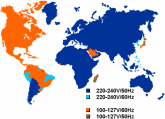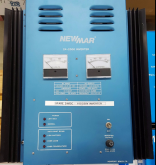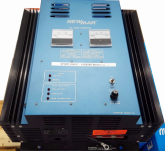I have searched quite a while for a nice DC 12V to AC inverter, should have dual voltage 110V and 220V output in a single inverter (and better with universal sockets)? but not seeing options yet, I see many ones saying dual voltage, but actually have 110V version or 220V version, they're not in a single inverter, wonder is it some technical difficulty or something else, just being un-popular?
It's because from the years international travel I have collected quite some small appliances, like hair dryer bought when was in Switzerland (1000 watts working with ~230V only), and electric cooker from Japan (600 watts working with ~110V only), I will continue have many international travel like 3months in Europe, 2 months in Japan, 2 months in Africa, some months in the America continent; want to make all them work at some off-grid 12V DC lithium battery powered places, wonder is there an easy DC 12V to AC dual 110V 220V voltage in a single inverter?
For example, this product https://amzn.to/2RSJmmN can convert DC 12V to AC 110V, or DC 24V to AC 220V; can I have 2 set of 12V batteries in series to get DC 24V, then make a switch to change two batteries in series or parallel, then easy to have both AC 220V (when two batteries in series), or AC 110V (when two batteries in parallel, or use individually)?
and the above product is 5000W Power Inverter DC 12V to AC 110V, costs $65, now I am willing to pay 2x cost for two products, one for 110V output and one for 220V output, can any vendor make the two in a single box product? (to save space/weight when traveling) is 2x cost enough to make such a single product? or 3x costs?
Thanks;
It's because from the years international travel I have collected quite some small appliances, like hair dryer bought when was in Switzerland (1000 watts working with ~230V only), and electric cooker from Japan (600 watts working with ~110V only), I will continue have many international travel like 3months in Europe, 2 months in Japan, 2 months in Africa, some months in the America continent; want to make all them work at some off-grid 12V DC lithium battery powered places, wonder is there an easy DC 12V to AC dual 110V 220V voltage in a single inverter?
For example, this product https://amzn.to/2RSJmmN can convert DC 12V to AC 110V, or DC 24V to AC 220V; can I have 2 set of 12V batteries in series to get DC 24V, then make a switch to change two batteries in series or parallel, then easy to have both AC 220V (when two batteries in series), or AC 110V (when two batteries in parallel, or use individually)?
and the above product is 5000W Power Inverter DC 12V to AC 110V, costs $65, now I am willing to pay 2x cost for two products, one for 110V output and one for 220V output, can any vendor make the two in a single box product? (to save space/weight when traveling) is 2x cost enough to make such a single product? or 3x costs?
Thanks;
Last edited:






